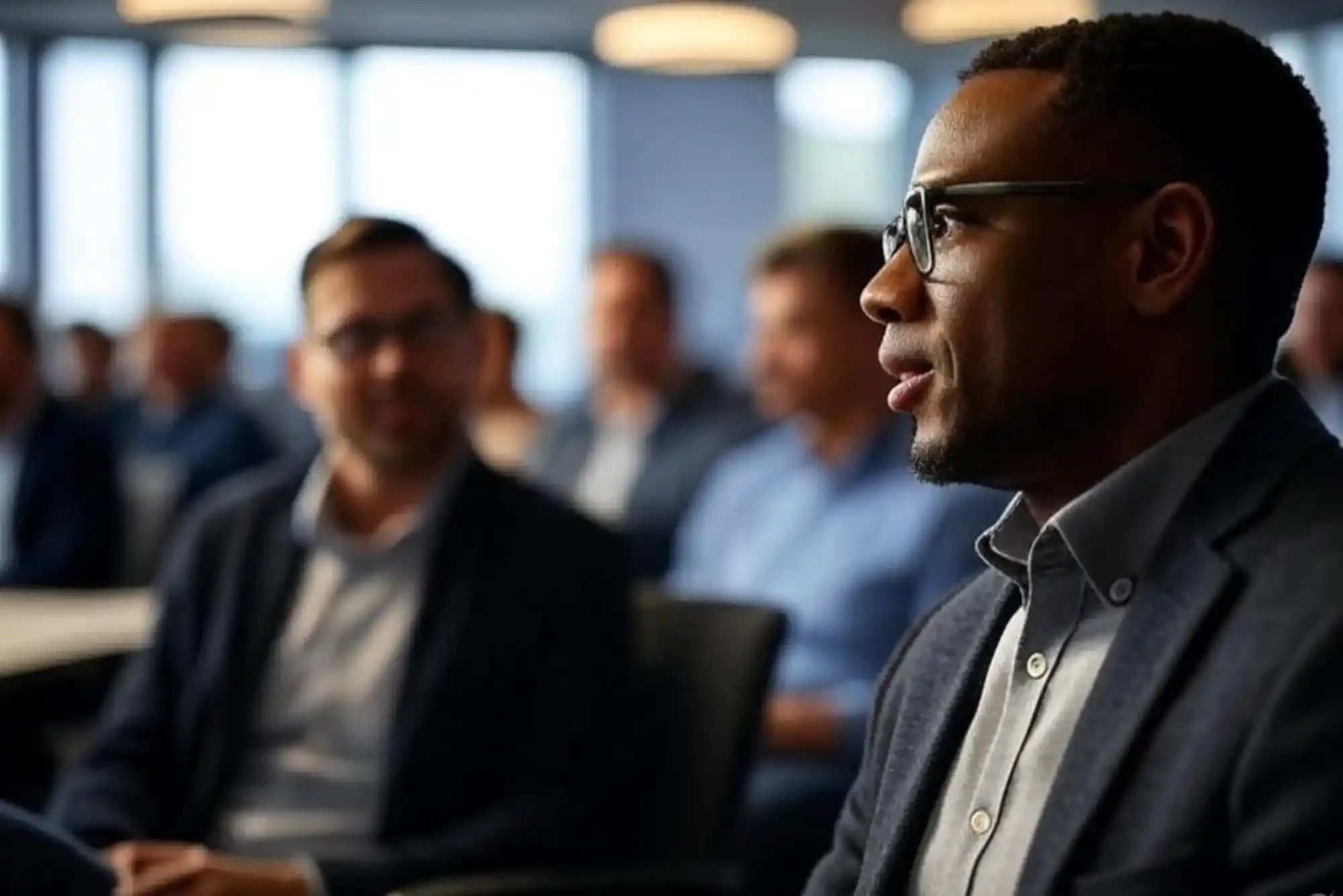Customer experience (CX) has become one of the most critical competitive differentiators in today’s saturated marketplace. Brands can no longer rely solely on product quality or price to win loyalty. Instead, customers expect seamless, personalized, and emotionally resonant interactions at every touchpoint. To keep up with this evolving landscape, many businesses are turning to customer experience management conferences and customer journey conferences as essential platforms for growth, innovation, and transformation.
As someone who has attended and spoken at several of these events over the past few years, I’ve witnessed firsthand how powerful and transformative they can be. In this article, I’ll walk you through how these conferences help businesses improve by sharing expert perspectives, real-world strategies, and examples from companies that have used these events as springboards for customer-centric change.
The Value of In-Person Learning in a Digital Age
We live in a digital-first era where on-demand webinars, whitepapers, and podcasts offer easy access to information. So, what makes a physical or hybrid customer experience management conference worth your time and investment?
The answer lies in depth, interaction, and immersion. Unlike a 45-minute webinar, a multi-day conference allows you to deep-dive into customer experience trends, tools, frameworks, and technologies. You don’t just hear about strategy; you see it in action, through live case studies, product demos, and interactive workshops.
These events bring together industry leaders, CX practitioners, analysts, and solution providers under one roof. That ecosystem of minds fosters dialogue, ideation, and spontaneous learning that often leads to breakthrough thinking.
Networking That Goes Beyond LinkedIn
One of the biggest advantages of attending a customer journey conference is the opportunity for meaningful networking. Digital platforms make it easy to connect superficially, but real relationships are built through face-to-face interactions, side conversations, and shared experiences.
At these conferences, you’ll find senior leaders from Fortune 500 companies, startups, and agencies who are all tackling similar challenges. Whether you’re struggling with customer retention, digital transformation, or aligning internal teams, chances are someone else at the event has been there and can offer real insight.
For instance, I once met a CX Director from a major airline during a lunch break at a customer experience event. Our 20-minute conversation sparked a collaboration that led to implementing a loyalty program improvement at my client’s company that lifted customer satisfaction scores by 11% in just three months. That type of value simply doesn’t happen in an online-only setting.
Real-World Case Studies That Drive Action
Many businesses approach customer experience with good intentions but get stuck in theory. What a customer experience management conference does exceptionally well is bridge the gap between intention and execution.
By showcasing real-world case studies, conferences provide a roadmap for success and a cautionary tale for what to avoid. You learn not only what worked but why it worked—what organizational buy-in looked like, what tools were used, and how internal resistance was overcome.
Take, for example, the story shared by a financial services brand at a CX event in Amsterdam. They walked attendees through their shift from NPS-based feedback to an emotion-driven CX model. Hearing their step-by-step approach—complete with the struggles of getting the legal department on board and retraining their call center staff—offered much more actionable insight than any eBook could.
Staying Ahead of Evolving Customer Expectations
The speed at which customer expectations evolve today is staggering. Generative AI, hyper-personalization, sustainability values—what was optional last year is mandatory this year. A customer journey conference often features sessions on emerging trends, led by researchers and tech innovators who are pushing the envelope.
This gives businesses a rare opportunity to peek around the corner and prepare for what’s next. Whether it’s preparing for AI-powered service models or rethinking the role of physical retail in a digital economy, these insights allow brands to pivot before competitors do.
Some of the best sessions I’ve attended were hosted by behavioral economists and UX researchers who demonstrated how small tweaks in design or messaging could shift customer perception dramatically. Imagine the edge you can get by being exposed to this level of granular insight.
Empowering Internal Culture Shifts
Great CX isn’t just about external touchpoints—it’s also about internal alignment. A consistent theme across many customer experience management conferences is the importance of culture in delivering a unified customer experience.
Many businesses use conference takeaways as a springboard to foster internal alignment between departments. When marketing, sales, customer service, and product teams operate in silos, the customer journey feels fragmented. Conferences often explore how to break down those barriers through shared KPIs, CX governance models, and cross-functional workshops.
I’ve seen companies come back from a CX summit and launch internal “CX Champions” programs—creating a network of ambassadors across departments to evangelize customer-first thinking. These shifts can radically improve how a business responds to feedback and continuously iterates on its service delivery.
Technology and Tool Discovery
With the rapid growth in customer engagement platforms, journey mapping tools, sentiment analysis, and AI chatbots, it’s no surprise that many companies struggle with picking the right tech stack. At a customer journey conference, you get to interact directly with vendors and platforms in demo zones.
Seeing a tool in action—how it maps real customer journeys, analyzes pain points, or automates response workflows—gives you clarity and confidence that a website review simply can’t offer.
Moreover, vendors often use conferences to showcase unreleased features or integrations, giving early adopters a competitive edge. I’ve personally implemented two CX technologies I first encountered at a conference, and both turned out to be game-changers for process automation and feedback management.
Training and Certification Opportunities
Another overlooked but valuable aspect of customer experience events is hands-on training. Many customer experience management conferences offer pre-conference workshops or post-event certification sessions in journey mapping, voice of the customer (VoC) analysis, service design, and CX measurement.
These sessions are typically led by seasoned consultants or industry veterans, making them highly practical and immersive. Not only do they enhance the skills of your CX team, but they also serve as proof of credibility when pitching internal CX initiatives.
One colleague of mine became certified in Human-Centered Service Design at a conference workshop, and that credential helped her secure buy-in from skeptical C-suite executives for a major redesign of their onboarding journey.
Measuring the ROI of Attendance
Like any business investment, attending a customer journey conference or CX summit must be justified in terms of return. But ROI in this case goes beyond revenue—it includes cultural transformation, strategic alignment, and long-term brand health.
Think about it this way: if a single insight from a session helps you reduce churn by 5%, or an introduction leads to a cost-saving vendor partnership, the returns far outweigh the cost of travel and registration.
Several studies have shown that companies with mature customer experience programs—those who are often the most active in the CX conference circuit—outperform their peers in loyalty metrics, retention, and customer lifetime value. Conferences play a vital role in nurturing that maturity.
Final Thoughts: The ROI Is Real—and Human
We often think of customer experience as being about tech, dashboards, and surveys. But the reality is that it’s about humans. Humans creating experiences for other humans. That’s what makes customer experience management conferences and customer journey conferences so valuable.
They provide space for reflection, learning, connection, and action. They humanize the discipline by sharing stories, struggles, and solutions in a setting that’s both inspiring and practical. And they give businesses the tools and mindset to evolve with their customers.
Whether you’re a CX veteran or just starting to build your customer-centric strategy, attending a conference could be one of the most impactful moves you make this year. The insights are real. The impact is lasting. And the opportunity to elevate your business is yours to seize.
If you’d like help finding upcoming customer experience events tailored to your industry or role, I’d be happy to point you in the right direction—just reach out.










